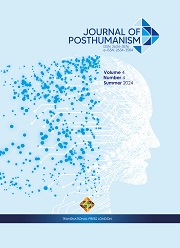Fungal Intelligence and the Posthuman: Mycohuman Art, Entangled Theory, and Fungi in (Eco-)Gothic Narratives
Fungal Intelligence and the Posthuman: Mycohuman Art, Entangled Theory, and Fungi in (Eco-)Gothic Narratives
Author(s): Susanne GrussSubject(s): Visual Arts, Aesthetics, Theory of Literature, Sociology of Art, Sociology of Literature
Published by: Transnational Press London
Keywords: Contemporary art; Ecogothic fungi; Fungal intelligence; Mexican gothic; The beauty;
Summary/Abstract: Fungi have become paradigmatic for the wonders, the adaptability, and the resilience of the nonhuman in publications, ranging from Anna Tsing Lowenhaupt’s anthropological analysis of the matsutake mushroom (2015) to Merlin Sheldrake’s popular take on the ‘world-making’ capacity of fungi (2020). This article explores different conceptualisations of ‘fungal intelligence’ and the posthuman in art, (popular) science, and literature. It argues that fungi are invested with a utopian potential in the first two. In literary texts, however, encounters of the human and the fungal worlds and the concomitant creation of a fungal posthuman veer towards the gothic. In a three-step argument, the article moves from the world of contemporary art to the recent flurry of textual production about fungi in anthropology and (popular) science and the construction of fungal intelligence in many of these texts. Readings of Aliya Whiteley’s The beauty (2018) and Silvia Garcia-Moreno’s Mexican gothic (2020) are then used to scrutinise how the novels create a posthuman form of life, an ‘other’ intelligence that is depicted as threatening in its uncanny otherness. It is, as I will show, the monstrosity of the posthuman fungal other that both texts position as a new iteration of the classic gothic monster.
Journal: Journal of Posthumanism
- Issue Year: 4/2024
- Issue No: 2
- Page Range: 141-149
- Page Count: 9
- Language: English

